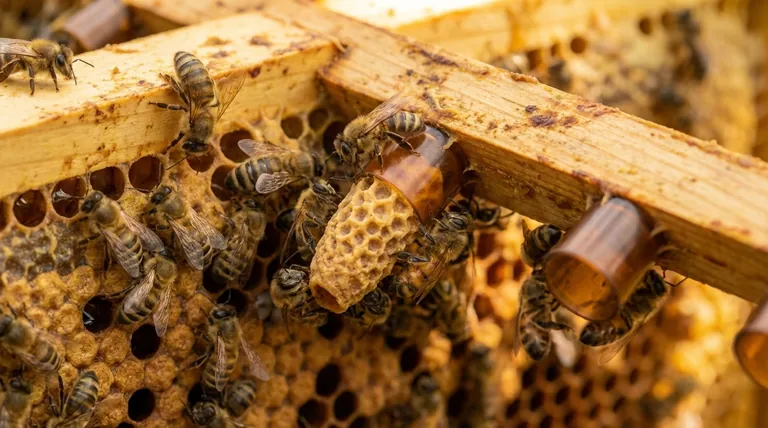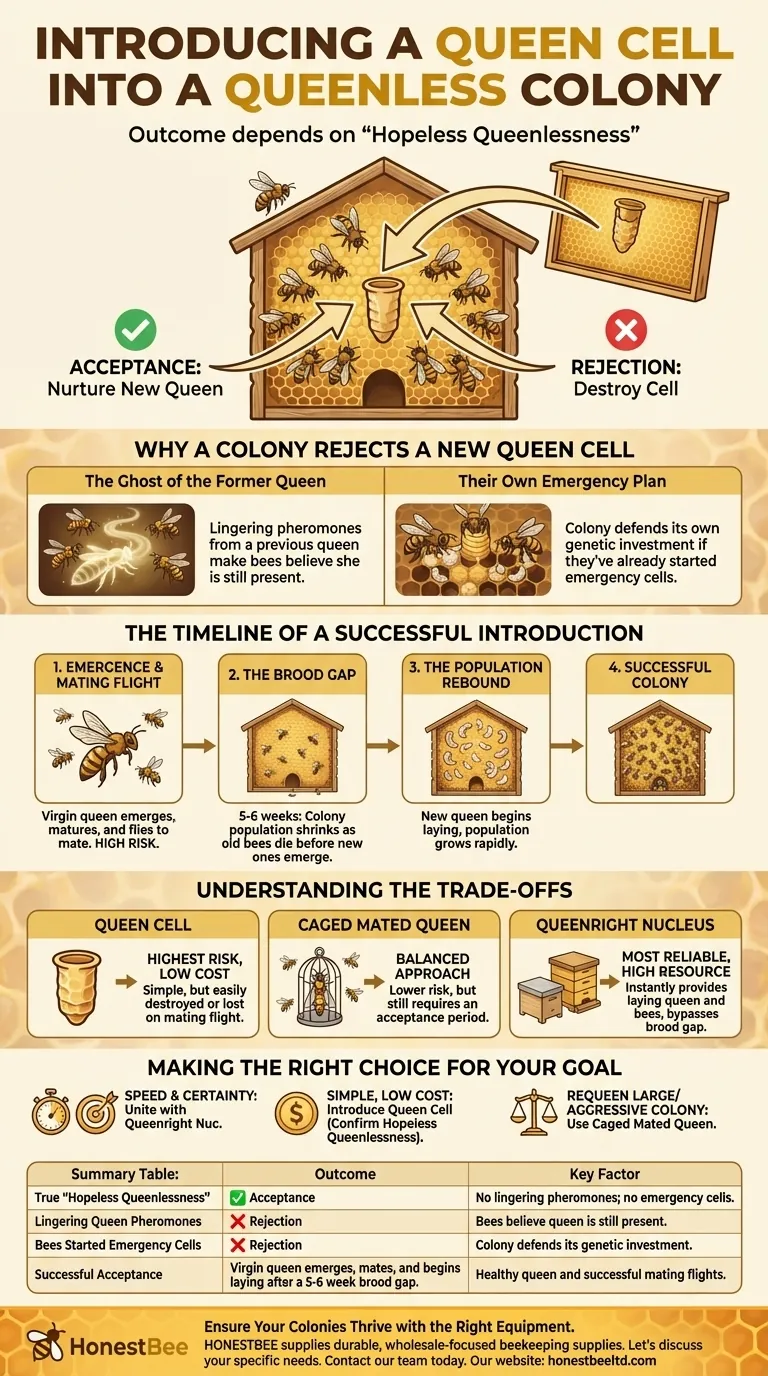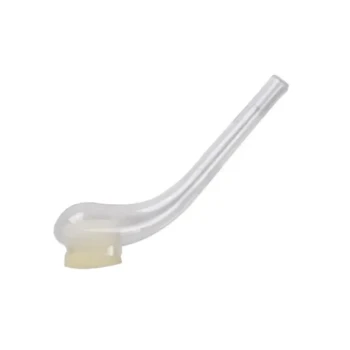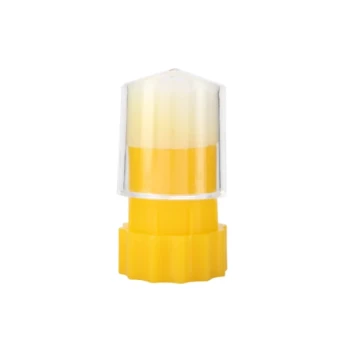When you introduce a queen cell into a queenless colony, the bees will either accept the cell and nurture the new queen or they will destroy it. The outcome is determined almost entirely by whether the colony perceives itself as truly queenless. If lingering pheromones from a previous queen exist, or if the bees have already started their own emergency cells, they will often reject the introduced cell as a foreign intruder.
The core challenge is not simply adding a queen cell, but ensuring the colony is in a state of "hopeless queenlessness." Only when the bees recognize their desperate need for a new monarch will they reliably accept a foreign cell.

Why a Colony Rejects a New Queen Cell
A colony's decision to accept or reject a queen cell is based on chemical signals and instinct. Understanding these drivers is critical for success.
The Ghost of the Former Queen
Even after a queen dies or is removed, her pheromones can linger in the hive for several days.
Worker bees encountering these pheromones operate under the assumption that a queen is still present. To them, an introduced queen cell is an unnecessary and threatening rival to the established (but absent) queen.
Their Own Emergency Plan
A truly queenless colony with viable eggs or very young larvae will often create its own emergency queen cells.
If the bees have already invested resources in raising their own queens, they will defend their genetic investment and destroy any unfamiliar cells you introduce.
The Timeline of a Successful Introduction
When a queen cell is accepted, the colony undergoes a significant, multi-week transition that temporarily impacts its strength.
Emergence and the Mating Flight
First, the virgin queen must emerge from the cell. She then needs to mature for a few days before embarking on one or more mating flights.
This period carries inherent risk; the queen can be lost to predators, bad weather, or fail to return to the hive.
The Inevitable Brood Gap
It takes time for the new queen to mate, return, and begin laying eggs. This creates a brood production gap.
During the 5–6 weeks after the virgin queen emerges, the colony's population will shrink as older bees die off without new bees emerging to replace them.
The Population Rebound
Once the new queen's brood begins to hatch, the colony's population will grow very rapidly, assuming she is a healthy and productive layer.
Understanding the Trade-offs
Introducing a queen cell is just one method of requeening, each with distinct advantages and disadvantages.
The Risk of Queen Cells
Introducing a queen cell is often the simplest method, but it carries the highest risk of failure. The cell can be easily destroyed, and the virgin queen can be lost on her mating flight.
The Caged Queen Method
A common alternative is to introduce a mated queen in a small cage. This allows the workers to slowly acclimate to her pheromones through the mesh before she is released.
This method eliminates the risk of a failed mating flight but still requires an acceptance period where the colony can potentially reject her.
The Queenright Nucleus Advantage
The most reliable, albeit resource-intensive, method is to unite the queenless colony with a queenright nucleus (nuc).
A nuc is a small, established colony with a laying queen and frames of brood. This immediately provides the failing colony with a laying queen and emerging bees, bypassing both the acceptance period and the brood gap.
Making the Right Choice for Your Goal
The best requeening strategy depends on your specific situation and tolerance for risk.
- If your primary focus is speed and certainty: Unite the colony with a queenright nucleus to instantly solve the problem of queenlessness and the subsequent population decline.
- If your priority is a simple, low-cost approach: Introducing a queen cell can work well, but you must first confirm the colony is hopelessly queenless and accept the risks of rejection or a failed mating flight.
- If your goal is to requeen a large or aggressive colony: Using a caged, mated queen is often the most balanced approach, providing a higher chance of success than a cell with less resource commitment than a full nuc.
Ultimately, successfully requeening a colony requires you to accurately assess the hive's condition and choose the method that best aligns with its needs.
Summary Table:
| Scenario | Outcome | Key Factor |
|---|---|---|
| True 'Hopeless Queenlessness' | ✅ Acceptance | No lingering queen pheromones; no emergency cells started. |
| Lingering Queen Pheromones | ❌ Rejection | Bees believe a queen is still present. |
| Bees Started Emergency Cells | ❌ Rejection | Colony defends its own genetic investment. |
| Successful Acceptance | Virgin queen emerges, mates, and begins laying after a 5-6 week brood gap. | Healthy queen and successful mating flights are critical. |
Ensure Your Colonies Thrive with the Right Equipment
Successful beekeeping depends on reliable management and high-quality supplies. Whether you're a commercial apiary managing hundreds of hives or a distributor sourcing equipment, the right tools are essential for efficient requeening and colony health.
HONESTBEE supplies the durable, wholesale-focused beekeeping supplies and equipment you need to succeed. From queen excluders and introduction cages to full hive components, we help you minimize risks and maximize productivity.
Let's discuss your specific needs. Contact our team today to learn how our products can support your beekeeping operations and boost your bottom line.
Visual Guide

Related Products
- Brown Nicot Queen Cell Cups for Breeding Queen Bees Beekeeping
- JZBZ Push-In Queen Cell Cups for Beekeeping
- JZBZ Type Wide Base Plastic Queen Cell Cups for Base Mounting and Queen Rearing
- Professional Queen Catcher and Introduction Queen Cage
- JZBZ Langstroth Queen Rearing Frame for Beekeeping
People Also Ask
- What are the ideal conditions for raising good queen cells? Achieve Robust Queens with Strong Cell-Builder Colonies
- What is the benefit of inducing supersedure by giving a queenright colony a protected queen cell? A Seamless Requeening Method
- What role does the natural swarming process play in queen rearing? Harness the Swarm Instinct for Better Queens
- What is the advantage of the Nicot Cupkit system? Secure Your Queen Rearing Success with Batch Protection
- What are the signs that a queen cell is about to emerge? Master the Critical Timing for Hive Success
















